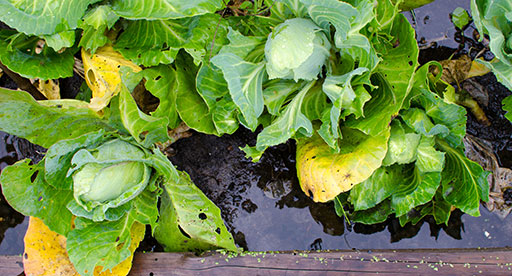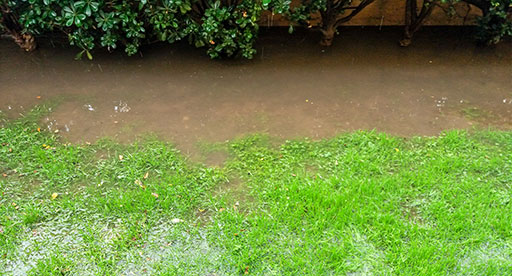
After the devastation of a flood and destructive weather there is much to do and the garden is often a low priority.
We've put together some simple flood recovery tasks for when you are ready to get back into the garden.
Taking some small steps to garden recovery can help to bring some normality back to your life and allow you to spend some time in your happy place. While there may be some sadness along the way, a little effort as soon as you can will hopefully speed up the recovery of your garden and help it flourish once again.
fruit & vege gardens
Don’t eat any garden produce that has been under water as there is a risk of contamination. Any unripe fruit or vegetables still on the plants above the waterline should be okay to eat in two months time. Always wash fresh produce and if in doubt, dispose of it.
Garden beds will benefit from the addition of compost to replenish the soil. Be mindful that soils may have been contaminated with raw sewerage and heavy metals. Check with your Regional Council for local advice, or the Ministry for Primary Industries for more information on contaminated soils in your area.
LAWNS
Try and keep off waterlogged soil, or keep it to a minimum, as this adds to the compaction of the soil. If you can, wait until the lawn starts to drain before walking on it.
Rake the silt layer to spread it evenly over the lawn, if the layer is not too thick. Remove debris and plant material from the lawn as this will kill off the grass when it re-emerges.
Apply gypsum or lime to aid in the lawn's recovery.

GENERAL
Remove silt and debris such as logs - anything that may have floated into the garden such as bits of timber with nails, glass and other flood debris that could become a hazard. Wear gloves and a mask to prevent breathing in the silt if necessary.
Hose silt off plants quickly so that they can start photosynthesising again and help their recovery. Be mindful that soils will still be waterlogged and it is the stagnant water that does the damage to the soils and plant roots.
Silt laden plants will benefit from foliar applications of Tui Seaweed Plant Tonic or Tui Seaweed & Fish, this will help wash the silt off and aid in recovery. It can be applied to the soil around the plants but do not do this while the soils are still waterlogged.
Add organic compost (homemade if it hasn’t washed away, or store bought) to the soil, when time allows. Soils become anaerobic (no oxygen) when they are waterlogged, killing off the beneficial bacteria and microbes that help feed plants. Compost is rich in beneficial soil microbes to help restore soils.
Trim back damaged plants, remove spent flowers and broken branches. A rule of thumb is to cut plants back no more than one third of their size. Some plants may be too stressed after the floods to cope with that much pruning so do a little trimming and tidying up now and more down the track when time allows.
Applying lime or gypsum to soils will help bring the soil back to life. The addition of any organic matter, such as sheep pellets, chicken & sheep pellets or blood and bone will help stimulate soil microbes and add valuable organic matter back into the soil. It may be difficult to get these products at the moment and not a priority, but the sooner you can get on to it the faster the garden will recover.
Some plants may show signs of recovery now, but in a few months' time may start turning up their toes, time will tell. By doing a little bit now, hopefully the garden can be saved and will thrive again.
Post a comment
Garden recovery after a flood Comments
It is unfortunate that some people will not take any notice of warnings about NOT eating their peas beans or whatever - how do you get through to them that it is dangerous to your health to eat them... I feel so sorry for the East Coast, and they are getting it again now...
Sandy Johnston